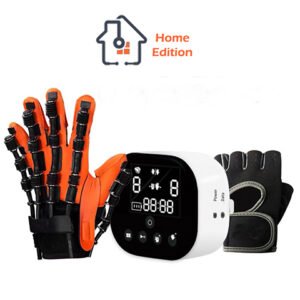Rehabilitation following Finger Amputation
Fingertip injuries can occur in accidents at home, at work, or at play. An injury can involve a sharp cut, a crushing injury, a tearing injury, or a combination of these injury types. An amputation can result from slamming your finger in a car door or catching your ring on a hook or nail.
Your fingertips are rich with nerves and are extremely sensitive. Without prompt and proper treatment, a fingertip injury can cause problems with hand function, and may even result in permanent deformity or disability. In this case, undergoing surgery is urgent but what matters most is pursuing physical treatment following the surgery.
The goal of the physical treatment is to have a pain-free fingertip that is covered by healthy skin and functions normally.
Physical therapy exercises are meant to fulfil this aim. These activities may include stretching the finger(s) to prevent contracture, the application of heat and/or cold to relieve pain and relax the muscles, and vital strengthening exercises. These are necessary to maintain or regain fingertip sensitivity and preserve or improve function.
To successfully accomplish all these tasks, the patient may need a professional hand and finger rehabilitation device that will effectively help him achieve positive improvement in less time.
The robotic rehabilitation gloves mobilize finger joints and work both in flexion and extension. Even on a patient who has no active residual movement, it is possible to apply passive mobilization from the first stages of treatment.
What is also exciting about the device is that its software offers many possibilities for the customization of the therapy.
Furthermore, the Portable Rehabilitation Robotic Gloves: SIFREHAB-1.0 would amplify force in the direction the user tries to move (open or close fingers).
The glove can also provide resistance in the opposite direction to help the user with movement stabilization or muscle tone exercise. The design could be implemented for a wide range of users and needs, particularly those patients who experienced finger (s) amputation.
SIFREHAB-1.0 and SIFREHAB-1.1 offer a low-cost, safe, intensive, and task-oriented rehabilitation through home therapy, which can help improve efficacy by incorporating the recovery of daily-living-activity functions as well as an environmental adjustment at home. In sum, The ability to perform rehabilitation at home benefits functional and psychological performance as well as independence.
To summarize, a person who experienced finger amputation and adheres to an effective home-guided treatment plan may be able to improve his hand/fingers function over time with the use of one of these advanced rehabilitative robotic gloves: SIFREHAB-1.0 and SIFREHAB-1.1.
Reference: Fingertip Injuries and Amputations


